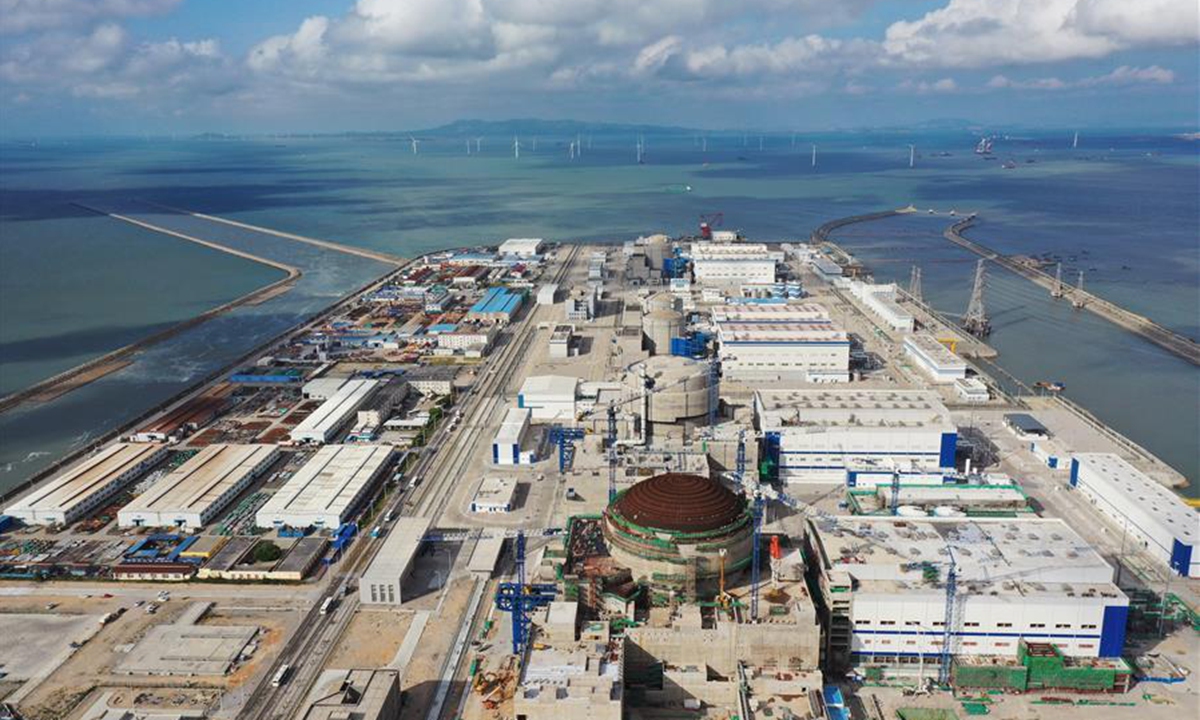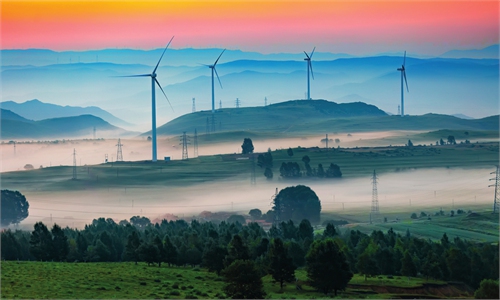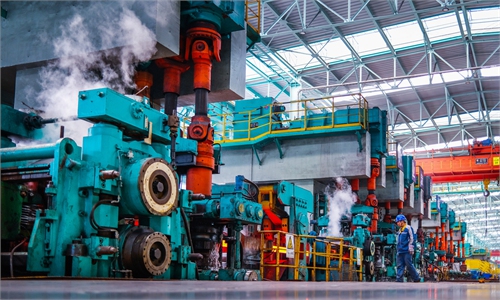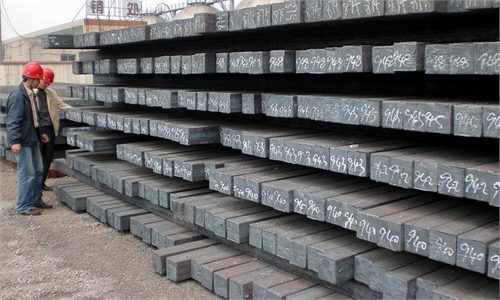China draws up plan for carbon emissions to peak by 2030, to take active, well-ordered steps to develop nuclear energy

Aerial photo taken on Aug. 31, 2020 shows a panoramic view of Fuqing project in the city of Fuqing, southeast China's Fujian Province. Fuel loading started Friday at China's first nuclear power unit using Hualong One technology, a domestically developed third-generation reactor design, bringing the unit one step closer to operation. (Photo by Guo Donghai/Xinhua)
China will draw up an action plan for carbon emissions to peak by 2030 and take active and well-ordered steps to develop nuclear energy on the basis of ensuring its safe use, according to a government work report submitted Friday to the national legislature for deliberation.
China's industrial structure and energy mix will be improved. While promoting the clean and efficient use of coal, we will make a major push to develop new energy sources, and take active and well-ordered steps to develop nuclear energy on the basis of ensuring its safe use, Premier Li Keqiang said while delivering the work report.
Compared with last year's government work report, it mentioned the development of nuclear energy, signaling that the country may put more effort into the development of the economic, safe and efficient energy source.
"Developing nuclear power is an important option to achieve the vision of carbon neutrality as it is a competitive new non-fossil energy, which can reduce the emissions of pollutants and slow the greenhouse effect," Wang Dezhong, a professor specializing in nuclear-related technology at the School of Mechanical Engineering of Shanghai Jiao Tong University, told the Global Times on Friday.
To achieve the goals of peaking carbon dioxide emissions by 2030 and carbon neutrality by 2060, it called for much more reliance on low-carbon alternatives like nuclear power, Wang said, citing Hualong One, China's homegrown model of the safer and more efficient third-generation reactor, as an example.
On February 1, the China National Nuclear Corporation (CNNC) announced its No. 5 unit in the city of Fuqing, East China's Fujian Province, China's first nuclear power unit using Hualong One, a domestically designed third-generation reactor, began generating electricity for sale.
The Hualong One nuclear reactor has fully independent intellectual property rights, which is being used in Pakistan at its K2 and K3 projects in the Karachi nuclear power plant. Its successful launch marks China's breaking of the foreign nuclear technology monopoly and shows China has formally stepped from nuclear country to nuclear power.
Liu Wei, a deputy to the National People's Congress and a senior official from the CNNC, told the Global Times that his proposal during this year's two sessions is to suggest that the government formulate a national scheme on nuclear development and promote the mass construction of independent third-generation nuclear power units.
At present, CNNC has 22 nuclear power units in operation, with an installed capacity of 20.23 million kilowatts. The contribution of nuclear power has exceeded 1 trillion kilowatts, which is equivalent to reducing the consumption of standard coal by 300 million tons and reducing carbon dioxide emissions by 820 million tons. The emission reduction effect is also equivalent to afforestation of 2.88 million hectares, covering an area equivalent to two Beijings.
Safety is usually a massive concern for nuclear plants, which was sharpened by Japan's 2011 Fukushima disaster. CNNC said the Hualong One nuclear reactor can avoid nuclear leakages and quickly restart operations, even in extreme circumstances like those of Fukushima, where an earthquake was coupled with a tsunami.
Wang believed that the government work report may also hint at a boost in the country's inland nuclear power stations. "Building an inland nuclear power station is technically feasible. An inland nuclear power station will use cyclical water-cooling towers, instead of draining away or pumping water from rivers," Wang said.
China halted all its nuclear power projects after Japan's Fukushima nuclear disaster but began construction work on several projects in eastern coastal areas in 2015. Although the resumption of the construction of the inland nuclear power projects has yet to be officially announced, at least 10 provinces have already proposed to develop their own nuclear power industries.
According to the Government Work Report, China will continue to improve the quality of the environment, and generally eliminate heavy air pollution and black, malodorous water bodies in cities.
Energy consumption per unit of GDP and carbon dioxide emissions per unit of GDP will be reduced by 13.5 percent and 18 percent, respectively. China will introduce special policies on providing financial support for green and low-carbon development and devise instruments for supporting the reduction of carbon emissions.
Proposals and motions by deputies to the national legislature and members of the top political advisory body this year are focused on ways to realize the country's ambitious carbon reduction goal. Some are suggesting that the implementation of China's new carbon emissions peak goal and carbon neutrality vision should be treated as an important political task by local officials.
State Grid Corporation of China, a Fortune Global 500 firm, became on Monday the first centrally owned Chinese enterprise to release a plan for achieving carbon emission peak and carbon neutrality goals, envisioning 50 percent of the electricity transmitted on its vast network from clean energy sources by 2025.




